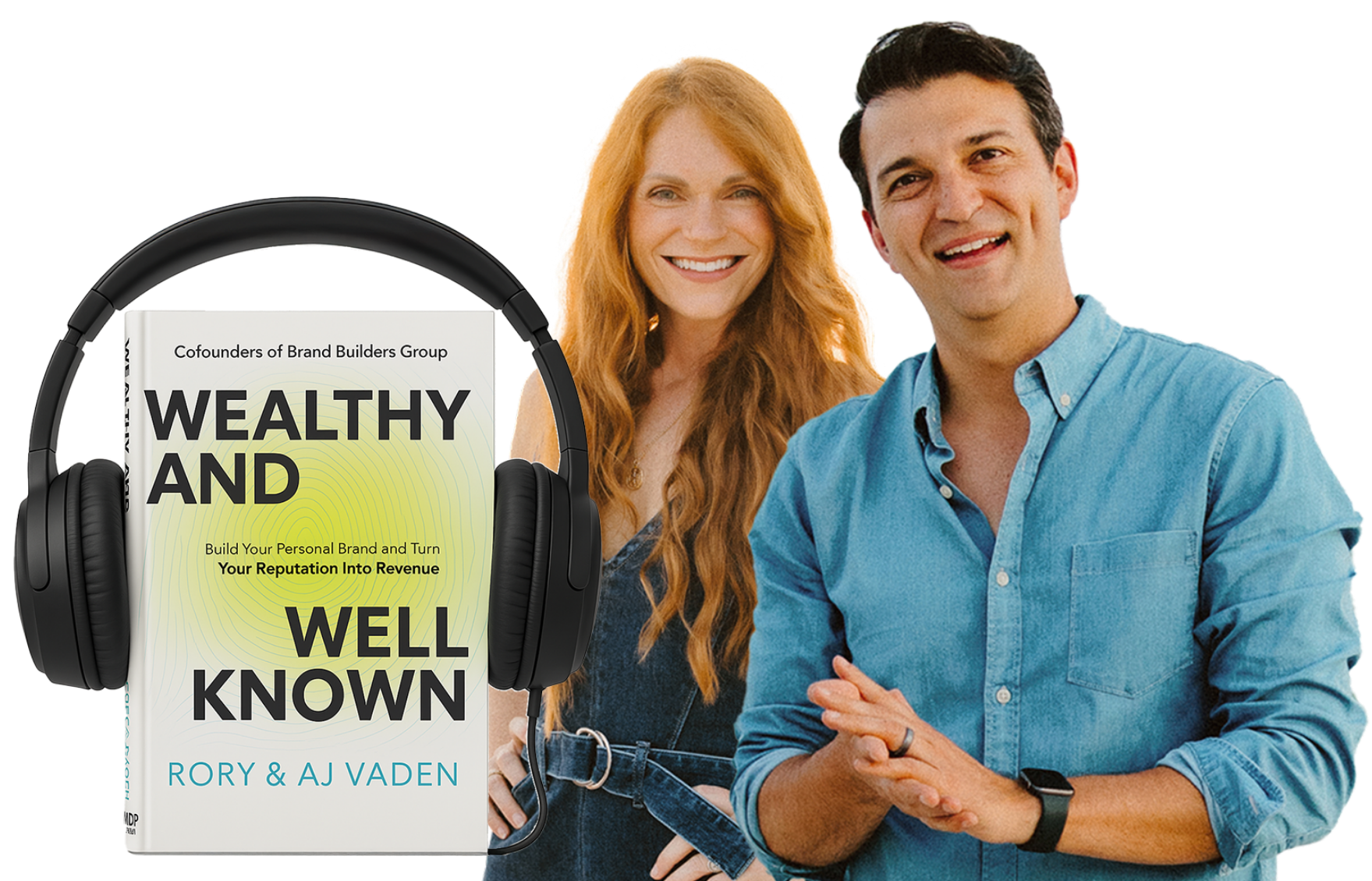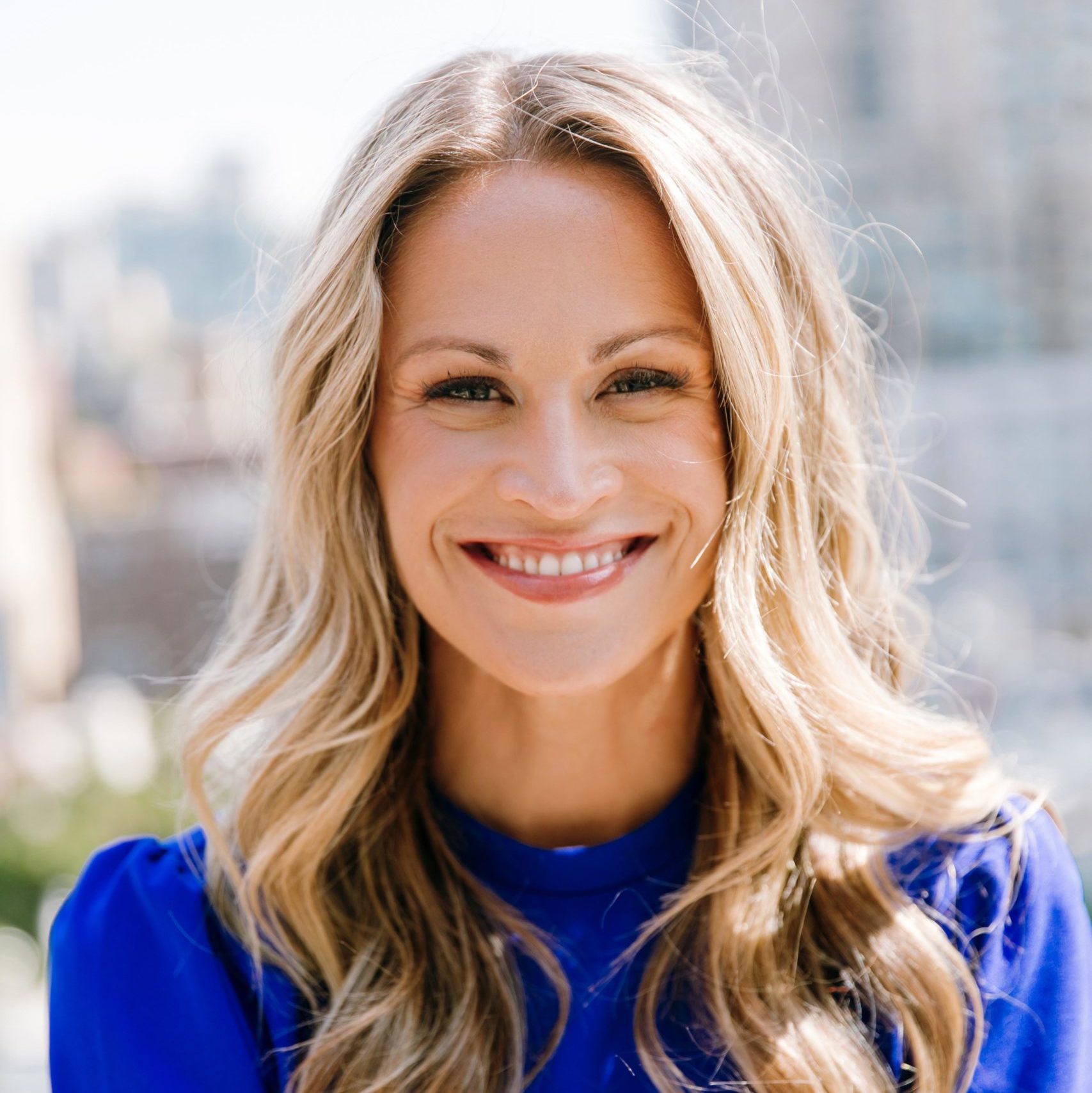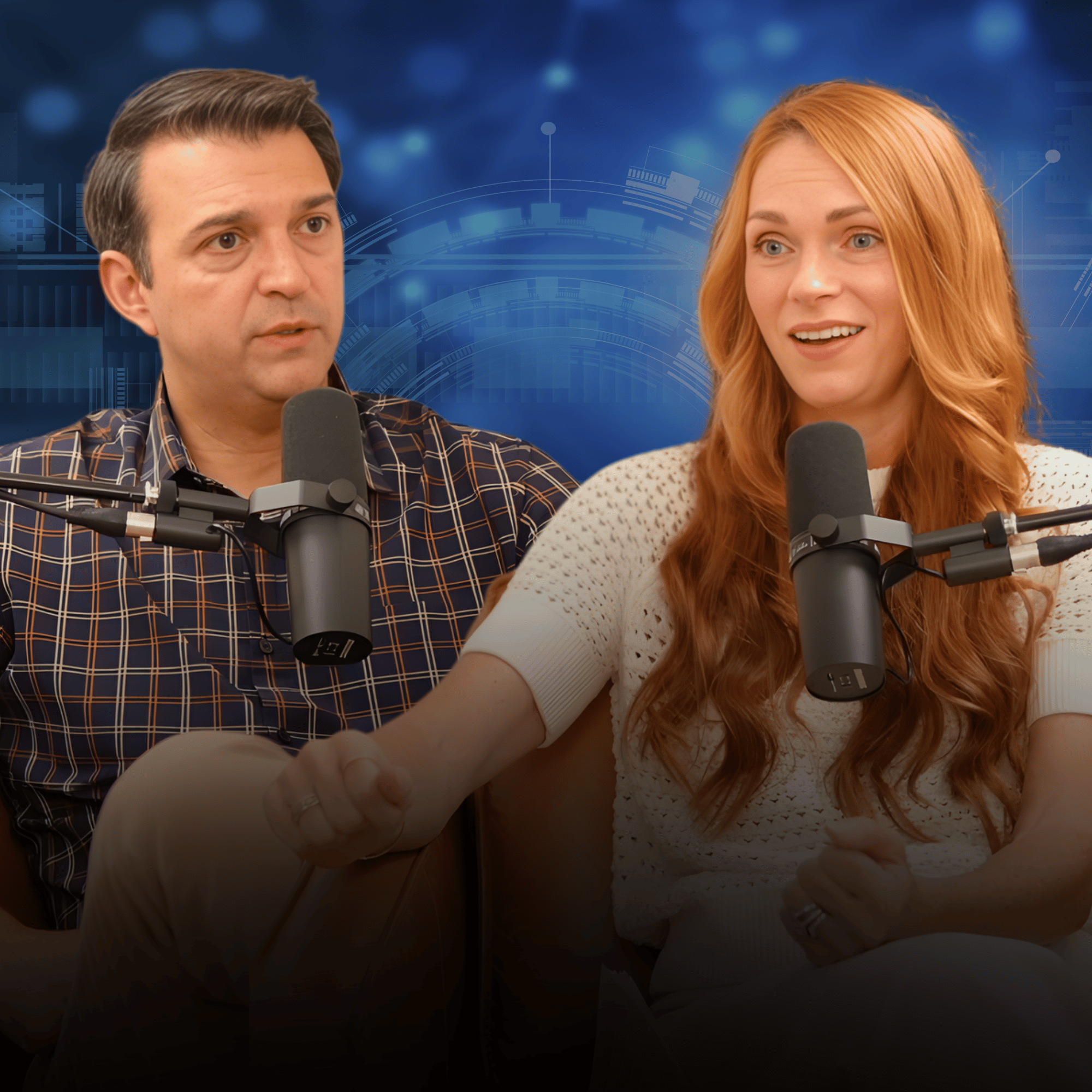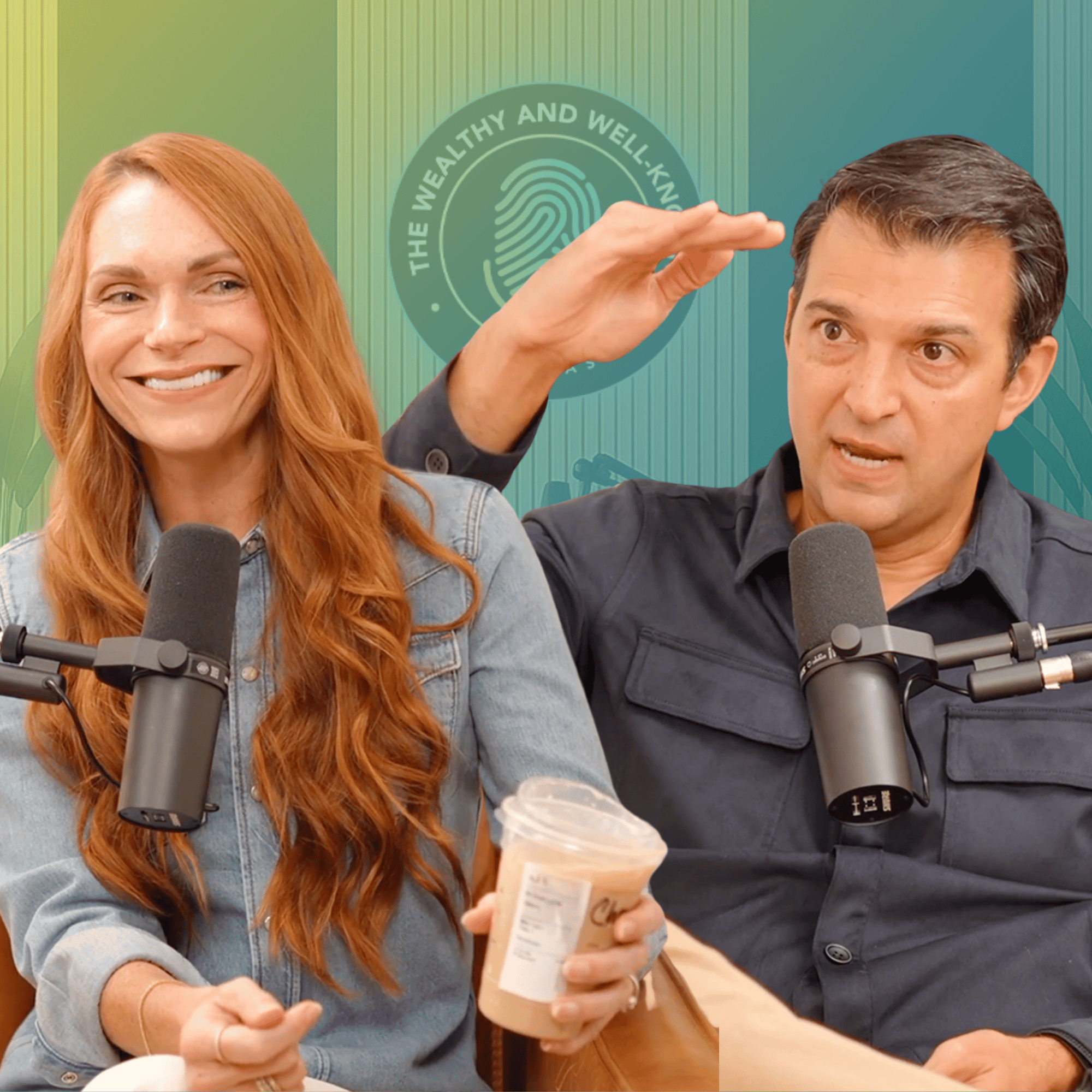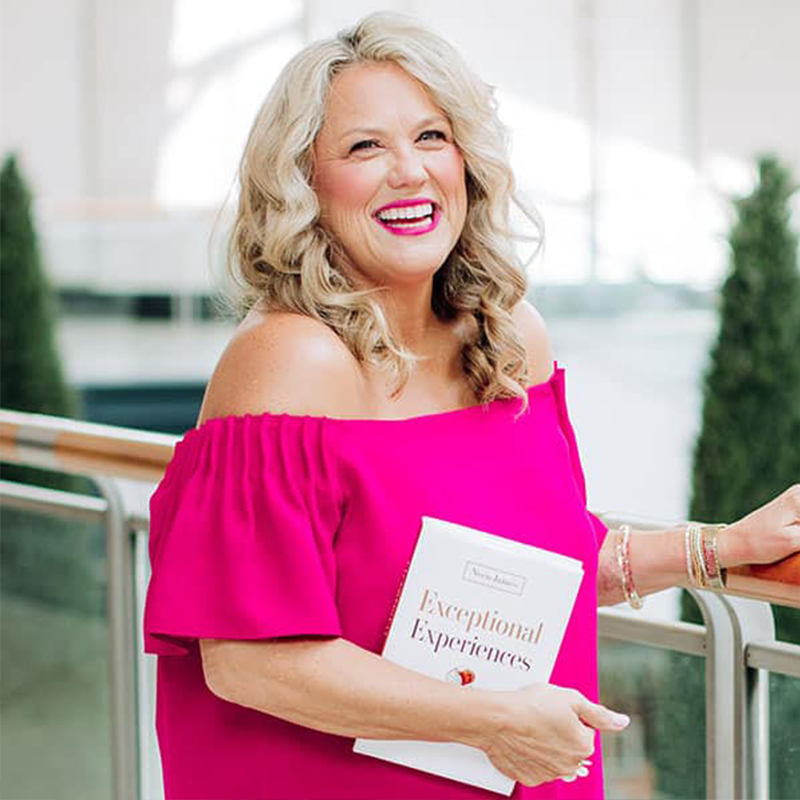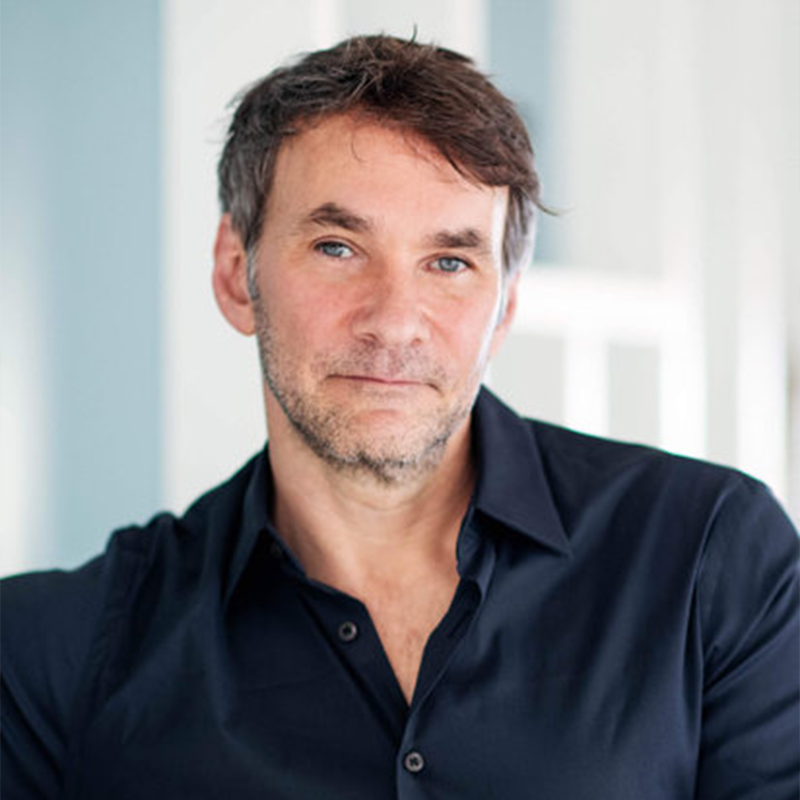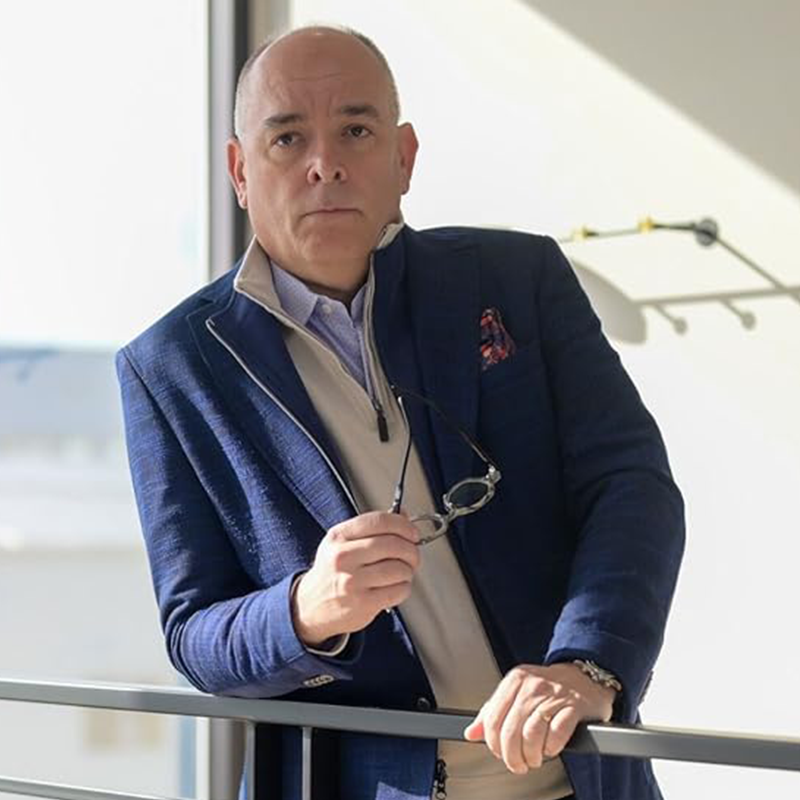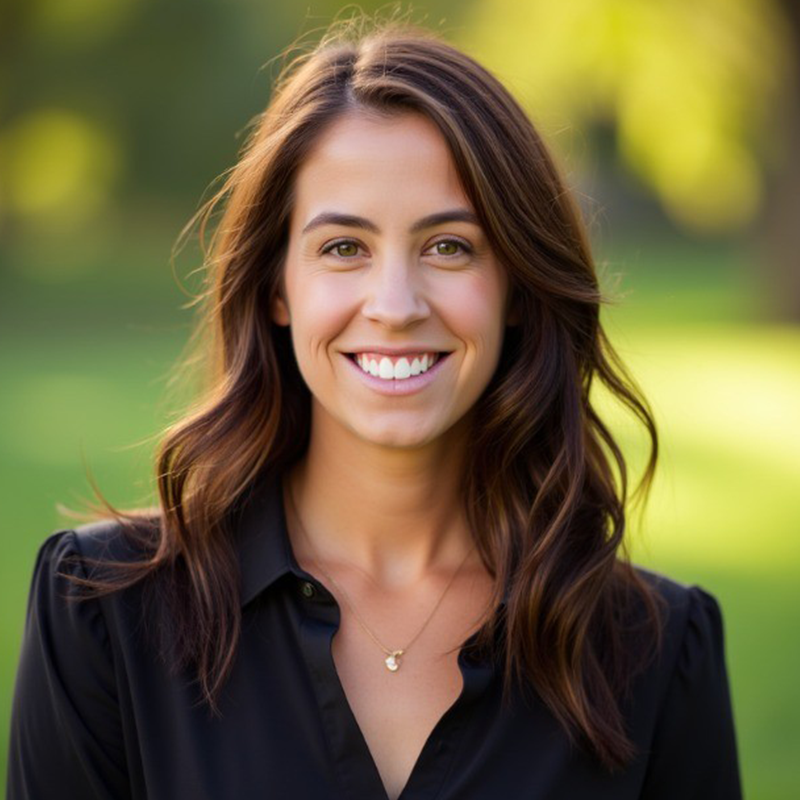RV (00:02):
Kindra hall is one of our dear real life friends, and she is a delight and she is one of the best female speakers in the world. One of the, the highest grossing, you know, highest revenue, grossing, keynote speakers, that’s out there. And Kindra and AJ and I like we’ve, we’ve known each other for years at this point. And it’s been really great to see how fast Kindra has launched her career. Specifically as a speaker. I, I remember meeting her earlier in her career where she’s like early on in her journey. She’s like, I’m gonna speak everywhere. And then it was like, within a matter of a couple years, she really freaking was everywhere. . And so I wanna, we’re gonna talk about that today, but she’s the wall street journal bestselling author. Her first book was called stories that stick. She has a new book that just came out recently called choose your story, change your life. And she is just an expert at, you know, storytelling and, and using stories to market and persuade and influence, and also to kind of coach yourself and the stories that you tell yourself about yourself and how much those tie in to who you become. So Kindra hall, welcome to the stage.
KH (01:11):
Thank you for having me Rory so glad to be here,
RV (01:14):
Buddy. You are awesome. And I, I really mean that, you know, like we, of all the people who come up, you know, to me, and, and say, I wanna be a speaker, like of the people who have actually built like a really true, you know, career. I think you’re probably the fastest that I’ve ever seen that happen to where it was like, I have a dream to speak to. I mean, you and I are gonna be sharing the stage at MDRT together here in, at, in Sydney, Australia in a few months. That’s, you know, a lot of people say, that’s, that’s the biggest, one of the biggest stages in the world. So how did you do that?
KH (01:52):
Now I’m not to make me nervous. All of a sudden I’m like, wait, that’s a big stage. I didn’t think left that part out.
RV (01:58):
It’s a big, old deal. You should be totally nervous. You should be freaking out. It’s a big, it’s a big deal.
KH (02:04):
My, my heart rate just, just went up significantly. I’m starting to sweat a thing. You can’t smell me through here. You know, I, it, how did I do that? It’s a good question. I think I really was someone who I would see and I saw you speak for the very first time. Gosh, it would’ve been in like 2006 when 2007,
RV (02:26):
Was it that DSA convict with direct selling association? Yeah, that wasn’t, I had a, I had like a eight minute part of a showcase. Yeah. And you were, you were there
KH (02:36):
I was there. I was there for those eight minutes, but I remember I was sitting in the audience and I, I didn’t really know that being a speaker was really a thing. I remember going to like conferences in high school. I saw Mark Sharon Brock speak when I was in high school. I know he was like a senior in high school and he was so great, but I didn’t realize it was something that you could do and make money at. And then being at that conference, seeing you there, I started to put together the pieces. And I had a, you put
RV (03:04):
The pieces together. You’re like, okay, if they’re paying this guy to do it, then I think there’s a career for me.
KH (03:09):
Like, that was terrible. No, I’m just kidding. I’m kidding. But, but you know, you don’t really know what is possible until you see it. And I kind of put together that I, I had a topic or a thing that I was, that I knew a lot about that actually came later that I realized that that was important. I knew that I could be on stage. I’d been on the speech team as a kid through high school and college. And then it was kind of a whim. I got this whim, I wrote a little mini article in success, magazine. It like, like, it was a little insert, like a little paragraph and somebody saw it, you know how sometimes these things just happen. Somebody saw it and called like found me and said, will you be your keynote? Will you be one of our keynote speakers?
KH (04:00):
What do you charge? And I had no idea. I didn’t know what to do. I remember I gave a 90 minute presentation, no slides. I like it was the first time I put a message together in that way. And it wasn’t great looking back, but it was enough for me to go back to my hotel room. I’ll never forget it was in Las Vegas, but like not on the strip, like that one, that’s like south of the strip mm-hmm and looking out the window and thinking what if I could provide for my family this way. And that’s when I was like, I need to figure out how to do this. And I got I was just really, I was obsessed. I was completely overcome with how do I do this as my job? And that obsession, I think is really what fueled it from the start
RV (04:54):
Mm-Hmm . Yeah. And I, I mean, I think, you know, the, the simple, but not easy, but honest answer, I feel like about how do you become a speaker is, is like there’s people hire you because they’ve seen you speak or because they’ve read something you’ve written like that’s what I’ve always heard. I’ve found that to be true. Like even to this day, like a lot of the inquiries we get or someone saw my Ted talk or they saw me five years ago or whatever or they’ve read a book or an article or they read a blog. Would you say that’s still true that that’s those, how do you get hired to speak, like your story? What made me think about it is you wrote this little blurp in success magazine and that’s, you know, they read something you wrote and then all of a sudden boom,
KH (05:38):
But that, I think that was more for me that was more a fluke. So I would say that at the be now, yes, people hire me because they’ve read my book. They’ve seen me on Instagram. They saw me at another event, someone they work with saw me at an event. So now it’s definitely word of mouth. Of course, I work with some incredible bureaus, so my agents are great. They’re, they’re great. They represent me well to their clients, but at the beginning, that one little article I feel like was a, a fluke. It was that obsession that hit me that day after I finished. And what happened next? And if I’ll share it with you,
RV (06:19):
Tell me, yeah, we wanna know, I wanna hear the, the
KH (06:22):
Actual story. This is the very specific thing that I did. So there was another guy at that conference who said, oh yeah, I speak all the time. He was being like, he was definitely bragging about it. And I was like, he knows something. I don’t like, how do I, so I offered the next day to buy him a coffee. And we sat down in the Vegas, whatever coffee shop. And he was like, well, you know, you just gotta reach out to people and see if they need a speaker. And I was like, but, but who, who do I reach out to? And he’s like, I don’t know, convention and visitors bureaus. And I was like, okay, I have a start. So I went home and I set a goal to reach out to 100 organizations or events a week for six weeks. Wow. Which would equal 600. And I started with convention and visitors bureaus. Now I will say, I never heard back from a CVB. Nobody ever that
RV (07:11):
Is not, I’ve never booked one of them. That was, I don’t think that was good advice. I, I was gonna
KH (07:16):
Say, no, it wasn’t, but it got me started because I would sit down at my computer and here’s what I had. I had a a really cheesy little demo video of me that was mostly words swooping in that my brother actually made that said fresh voice, stor new, new strategy storytelling. And then like this, a little clip of me talking at a sales event for a company that I was employed by, like I worked for. So, and then I had done, I did like little vlogs for YouTube. And so I cut in like me talking just so they could hear my voice, see what I looked like on stage. It was so low budget. I, but I had nothing else. And then I created a one sheet PDF or whatever, and I sat down and I Googled women’s events. And then I would enter ’em into a spreadsheet and I’d look up like, who is the contact?
KH (08:08):
Who is the whatever. And I would look up like, who else needs my message entrepreneur events. So I Googled entrepreneur events. I Googled. And a big thing for me was Amer the, I found the American marketing association and they have chapters in every city. And so I started, so I found the one in Minneapolis and they, so I made this list. And then at the end of the week after I had a hundred, I would send an email and say, this is how I can basically how I can serve your audience, because it’s not like they have a problem. So I’m trying to tell them that I know you have this problem and I can solve this problem. I included the link to the video. I attached a PDF and I sent it. And the majority of people didn’t write me back, but I remember the American marketing marketing association in Minneapolis did, and they said, will you come speak?
KH (09:01):
And I said, yes. And then I thought, well, wait, if there’s a Minneapolis chapter, maybe there’s a Nashville chapter. Maybe there’s a Dallas chapter. And so I then had 50 chapters that I could reach out to. And that’s how it started. So it wasn’t, I mean, it was brute force at the beginning. And I did, I reached out to 600 events. I heard back from probably 50, but it was enough to get me in front of people and, and make no mistake. The events that I was writing for the most part I got paid with, like, here’s a Chi, you can have the remaining chicken taco at the end bar
RV (09:39):
Buffet line.
KH (09:41):
like, nice. I wasn’t feeding my family. I was barely feeding myself. But to your point, Rory, what I was doing was getting my message on a stage, getting eyes on that message. And from there, that’s how it happened so quickly. I, wasn’t afraid to reach out to as many people as possible to speak for as many people as possible. So I could test my message. So other people could see me. And it just snowballed it snowballed on top of that, such that you, I went to that first national speakers association, annual meeting. And I think we talked there and I got a lot of great info there that I could apply to my search for places to speak. And I think it was two events later that I was on the main stage. And I know it’s like, how did this happen? But it was because of that like brute force rate from the get go
RV (10:31):
Mm-Hmm yeah. That’s like, that
KH (10:33):
Was a long story.
RV (10:34):
No, it’s a, I mean, yeah, it’s a great story, but that is it. I mean, it’s like every association, every company has events. They need speakers and you, you call ’em and you ask ’em are you email? And you ask ’em, do you have speakers? And they say, send me your topic and send me your demo video. Like, and that’s how, how it starts. N now you’ve always been great at telling a story. You’ve always been fascinated at a story, your, your, I mean, this is a huge part of what you, you do. You know, your first book, which we also, I think really kind of became friends when you were launching stories that stick, cuz it was like, Hey, how do I hit the best seller list and all that stuff. Yeah. Which was awesome if I remember, I think it hit number two on the wall street journal.
RV (11:18):
Yeah. Like was legit was your great storyteller and a huge part of speaking is being a great storyteller. So what are some of the things, you know, I’m thinking more of stories that stick what are some of the elements that you need to tell? Great stories. And, and let’s say specifically from stage now, it, it might not be, you’re a keynote speaker in front of yeah. An arena of people. It might be a webinar or a podcast interview or an Instagram or a YouTube live or whatever, but like what are some of the kind of mistakes you see experts making when they’re telling stories?
KH (11:56):
Well, the first mistake is not telling any stories because the stories are the thing that people remember. Like I remember from early two thousands, your story about the stairs and I can still see you on the stage telling that story. And it’s, it’s been, oh my gosh, is that almost 20 years? I don’t wanna say that out like that. That’s embarrassing. but, but, so, so that’s one of the big mistakes is that, and in stories that stick, I go, it’s very much in depth on what makes a story, what are the components you need to have? But I see a lot of people think they’re telling stories, but they’re just kind of glossing over the story. They’re missing key moments in there and details and the pieces that make a story memorable. So, so I would say that’s the first mistake.
KH (12:47):
The second mistake that people make is it’s they choose the story because it’s a story they want to tell. Maybe because it’s funnier, it’s emotional or it makes people cry or it’s about their dog and they really love their dog. And they aren’t, it’s not exactly clear to the audience why that story for this message. And so I would say it’s, you know, it’s really important to make sure that when you are telling stories in any kind of presentation, whether it’s a, a keynote or a pitch that it’s a really clear to the audience, why you’re telling this story to illustrate whatever message it is that you want them to walk away with. And then I think the third thing is, well, there’s so many but I think one of the great, maybe not the mistake, but I think one of the great opportunities stories afford us is the opportunity to just be ourself, to not have to be the expert when you’re up there. Like you’re, you are just telling the story of, of how like something that happened to you or, or a lesson that you learned or an experience that you had. And, and it’s such a perfect opportunity to be human versus here is the salesperson standing in front of the room or here’s the expert that I’m supposed to listen to. So to choose stories that, you know, to recognize that like really cool thing, that story allows us to do and then to choose stories, to tell that that make that even more possible.
RV (14:28):
Yeah. And I that’s so true. This story is so humanizing. It’s like such a way to connect with people also a way to entertain. Like it it’s naturally entertaining and, and provocative, like if you were gonna write a new story. Okay. So let’s say you were gonna give a new speech. What do you think about in your mind? Like, what’s the thought, press you go through where you go, how do I select the story? I’m gonna tell, so maybe you go, okay, I’m talking to this group, I wanna make this point. And then from there you go, I should do a story or like walk us through the sort of thought process that goes on in Kindra’s head, where you go. Here’s how I select the story. Here’s kind of the high, the high level parts and how I sort of like outline it and then, you know, just like take us through that.
KH (15:18):
Yeah. Yeah. So I think I always start with the, well, some sometimes it, it, it can come in one of two ways sometimes. I stumble upon a story and I’m like, oh my gosh. Like and when I say stumble upon a story, either something happens to me or I remember something that happened years ago and I think, oh, wow, this illustrate, like this is a great story. This illustrates a point that I often try to make. For example, in stories that stick, the opening story is about buying a bottle of cologne on a trip in Slovenia. And I specifically, and the salesman told a story and he did such a great job of it. And I specifically remember standing in that situation, thinking to myself, this is a story. This is a story story is happening to me right here. Right now.
KH (16:16):
I need to remember this. So sometimes it’s the story first. And sometimes it is, which then gets engineered into a message is sometimes it’s the message first it’s, this is the message that I want them to walk away with. This is what I want my audience to think, feel know, or do, what story do I have or what story is there that illustrates this objective that I have. And that’s where it can be. It can be really, it can be really surprising like, oh, wait, there was I, and this isn’t a new story, but this is a story I tell this story about using a story in physics class. Like you wouldn’t think as a, as a, you know, as you said, a well paid keynote speaker that I would open keynotes with a story about a paper from physics class in 12th grade, but it illustrates the message I want to deliver. So very clearly that it ends up being the right story to tell.
RV (17:16):
Okay. So you can either start with the story and engineer the message, or you can identify the message and then sort of reverse engineer it back into the story that you want to tell.
KH (17:28):
Yeah. And I think that the most frustrating thing about the process, and I can say this honestly, like, I, I don’t want people to think that it’s like, oh, so easy. Is that often when you have a message it is really, really hard to find the story that goes with it. Like you can be like where you can sit there and say, what’s a, I have, what’s a story I have and one won’t be there. So I’ve gotten a lot better at saying, I have this message I want to deliver. And then allowing space in my own brain for the right story to come along. Now, it does require heightened awareness on my part. Like, do I witness something a different way? Do I recall something a different way, but, or sometimes you find the story you’re like, oh my gosh, this is such a great story. I have no idea where to use this story.
RV (18:18):
Do you keep a list or anything like, do you like, I, I have like,
KH (18:22):
And again, this is where I wish, I mean, in a perfect world, I would’ve created an app for myself and then I would sell it to all of you, but I have, I text story ideas to myself. I have multiple notebooks and scraps of paper and napkins. With story ideas. I, I put ’em in my notes. I email them to myself. So they’re kind of all over the place. I need to get better about that, but that’s
RV (18:47):
Also, but you do capture it, you at least document it and, and attempt to store it somewhere.
KH (18:53):
Yeah.
RV (18:53):
So what is the difference between telling a story and telling something that happened? And, and is there a difference? Cause I think a lot of people go, I, I’m not a good storyteller, you know, but like they tell friends like, oh, Hey, this is what happened, but then it’s, it’s not very compelling. It’s not very engaging. It’s just really flat or it’s like, oh, okay, well, like what was, what was the point of that? How do you make it engaging?
KH (19:22):
I think that’s kind of the, so if you think about telling something that happened the way I see it is, it’s kind of like a, like a flat line. Like you’re just not like dead, like flat line, but you’re just going along the things kind of in chronological order. Which isn’t necessarily, that can be a place to start with a story, but what a story needs is to kind of take that flat line and to bring the two ends together and then make it a 3d, like a sphere. So that there’s, there’s more intention to it. It’s not just this and this and this happened, it’s these things all happened. And this is, this is what it means in the world. So how that happens is, well, I have a three part, you know, a story has a beginning, a middle and an end, but as we’re thinking about stories to think about it in a way of, at first you’re establishing like this world of what was like, what, how you knew the world, what was happening basically setting the scene in what I call the normal.
KH (20:23):
And then the middle part of the story is the action point is the decision that was made. And the interesting thing is, as you’re creating a story versus telling somebody what happened, like this happened, that, you know, I come home from a flight, I say to my husband, we got delayed. And then we, there was a maintenance issue. So we turned back around and then we took off, but there was weather. So, you know, blah, blah, blah, blah, blah. And now I’m back home. Whereas with the story there would be, it would be like you build it up in the normal so that the audience is thinking something’s about to happen. Something’s about to happen. Something’s about to happen. And that explosion is the thing that happens. And they’re like, oh yes, that’s what it was. And then the new normal is what you learned as a result.
KH (21:05):
What happened as a result? Now that’s the basic framework, but what, and in stories that stick, we talk about this, this is what the research is that a story really has. Then also four key components. It needs a character, an identifiable character it needs authentic emotion. It needs like a specific moment in the story that people can like be drawn into and really visually see it. So that they’re, you know, sitting right next to you on the stairs is in take the stairs case and then specific details. Because again, it’s the specific details that will have the lasting effect cognitively for people to remember that story. Interesting. Did that help? It’s a little mad
RV (21:46):
Scientist. Sorry. Yeah, totally. Sorry. Well I think it, it’s just, I think a lot of it is realizing that there’s a difference between telling a story and telling what happened and going a story is something you have to craft. Like it’s, it’s
KH (22:01):
Tension behind it, intention
RV (22:02):
And energy. And you know, so, and I like stories that stick. That’s really what that is about. So your, your newer book choose your story, change your life is interesting because that’s more about the stories that we tell ourselves.
KH (22:17):
Yes.
RV (22:18):
So I’d love to kind of marry that with what are the stories that maybe you’ve heard experts tell themselves about why they can’t be successful. And then what are some of the stories that you told yourself about maybe the industry or whatever, and then how do you rewrite your, your story to be more empowering?
KH (22:43):
Yeah. I, I mean the stories that we, because of course the stories that we tell ourselves have all of the components by nature that I just mentioned. And so the natural stories that are alive within each of us, those are crafted without effort. That is, we are very good at crafting those stories ourselves. And so we have within us, these very powerful forces, which are our stories that dictate our actions for better or worse. So for example and for talking, and if we’re talking about speakers here, it’s so funny, the, the stories that people tell themselves. So I was working with a speaker several years ago, long before I was a speaker who who was it, wasn’t for a lack of like, it wasn’t like imposter syndrome. But there was definitely some frustration around not being able to get to the next level.
KH (23:42):
And the stories were that this person was telling themselves as well. My content is serious and, and audiences just want they just wanna laugh and I can’t laugh, or I don’t make people laugh because I’m so serious. And so there were, there were some of these stories that were and, oh, I’m a even stories about the stories that could be told was I’m a very private person. I can’t share my stories. So therefore I won’t be successful as a speaker. Hmm. Or as successful as I want to be. You know, I had stories about myself, the stories that I was stories that I had about myself and then stories that were told to me, I was told on multiple occasions that I was too blonde to be taken seriously on stage
RV (24:38):
Really?
KH (24:39):
Yep. That I was too young. I didn’t have enough experience or success that I was too female. Right. So, so that there were, and, and so it’s really interesting too, because those were stories that I could have adopted for myself. As, oh, I, I guess I don’t have a place here instead. Some of the stories that I really struggled with were yeah, like what, what value can I bring to them or that audience I would be, I would be standing backstage thinking that audience doesn’t pair anything about what I have to say. And I would have the stories playing in my head of maybe an event, like way at the beginning that didn’t go so well. Right. Cause I was still getting good at speaking. And so it really is a matter of when you find these stories that you’re telling it’s, it’s seeing them for what they are. Right. Mm-Hmm so the person I was talking about earlier saying, well, I’m serious. And so I won’t be as successful of a speaker as I want to be. Well, is that story serving you? And if not what, what’s another story that we can find. And, and it was actually then branching out into like his version of humor, like what his version of humor looked like and where he loosened up and was able to be a better speaker that way. It’s really important to be able to catch yourself in these negative stories and see them is just stories. And then what are the stories you could tell instead to stop that criticism and move you in a better direction?
RV (26:22):
Yeah. That’s, that’s, that’s really amazing. Like one of the things that I picked up there is like, it’s funny how, when we’re trying to craft, like when we’re trying to tell a story at first stage or something, we have to sit down and go, all right, I need to craft this with intention. But when it’s the stories in our own head about our own life, those are crafted without much effort, almost invisible. Like we don’t even, yeah. You know, some, somebody says something, boom, we adopted as truth. We live, we live our whole life by it. We don’t even know that it’s there affecting how we think what we do. And so it feels like identifying and just going, oh, where did I learn that? Like, where did I, where did I even adopt that from? I think a lot of it is fake. Like it’s, it’s manufactured. They’re not real things.
KH (27:10):
I, I had a really, I had a big epiphany. That’s actually changed my life as a speaker. I realized that I, I had this belief that if I wasn’t terribly stressed and painfully nervous and out of my mind, terrified to go out on stage that I then didn’t, I wouldn’t do a good job. It was like, it was required for me to be really unsure of myself. And that’s how I used that. I would use those stories as like the adrenaline that got me on stage, but it made me miserable. I hated my job because I felt so terrible right before, sometimes days before I, my husband would call it the darkness before I would go and give a presentation. And so I used this self storytelling strategy because I just couldn’t live like that anymore. I would just feel too miserable before every keynote.
KH (28:11):
And so I would choose to tell myself stories that would stop that anxiety stop that, that nervousness. And, you know, you would think that one of the stories you would tell is a time you did a great job. Well, I do. I mean, forgive me for saying this, but I do a great job almost all the time. Right. And so my inner critic is like me, that’s not good enough. That’s not good enough. And so I would stay in this very nervous state. So I decided to, and we’re talking about carefully curating, crafting our stories. I decide, I figured out that the stories that worked were the stories of when all the odds were against me and I still did a great job. So there was this one huge event. So it was a big sales conference for tech. It was like the first tech event that I had spoken for.
KH (29:01):
And I got the stomach flu, like in the middle of the night, the night before I was so sick, they had to put a bucket off stage for me with strict instructions to cut the mic. If they saw me go towards the bucket I was, I was terribly ill and this was way before COVID. So you could, you know, show must go on. I gave a killer 90 minute presentation and then went to the airport and got some, you know, pretzels and Gatorade. And I was fine, but like that, I’m like, wait, I was, or the time where I was in The Bahamas and the whole electrical grid went out, all that was on in the room were the generator lights. And I just called out to the audience. Do, should I just keep going? Like my mic didn’t work. There were no decks.
KH (29:43):
And it was, and it just kept going. And it was awesome. Right? So telling myself these stories, but those are the stories. Those were the only stories. So this is, what’s really important as whatever your limiting beliefs are, whatever they are that you’re telling yourself that you’re, you, you gotta catch it. You gotta figure out where it’s coming from, but then it’s your job to choose better ones. And I have this set of stories that I consistently retold myself. I call it the fourth step it’s installing before I would go on stage until now. I don’t, I don’t have to struggle with any of that anymore. So for example, Roy you’ll love this. I was at an event just a, just a couple weeks ago. And the event got started late because for whatever reason. And so then the guy was going long and I was sitting there and then they, they called for a Q and a and everybody left the room because they didn’t wanna sit for the Q and a, and they went out to get the coffee. And then it was my turn to come up on stage and everybody was gone and they were like in the back, like dinging the gong. I would’ve freaked out before and now I, I don’t, because I know that I know the stories of when I’ve faced terrible odds and done. Great.
RV (30:53):
Yeah. That’s I, I love the word that you use there reinstall, it, it it’s, it’s like a program that you’re just in installing taking the old one out and going, oh, that one doesn’t work. I’m just gonna drop that one. I’m gonna reinstall a new program, which is just a new, a new story. Well I love this Kindra. So good Kay stories that sticks the first book, which is, you know, I would say is really kind of like the art of how to tell a great story. Yep. And then, and then choose your story, change your life, which is, is a lot about, you know, almost like a very personal development, kind of like your own mindset and about how you live your life and how much these stories impact us. Where should people go if, if they wanna connect with you and learn more about, about you and what you’re up to.
KH (31:40):
Yeah, well, you can find me. I’m Kindra hall.com. K I N D R a H a L L social I’m on LinkedIn, Twitter, kind of Facebook, Instagram. You can find me there. And of course the books are wherever books are sold
RV (31:57):
Uhhuh. Well we’ll link up to Kendra hall.com in the show notes. Thank you for this friend. Always, always such a pleasure to talk with you. I’m, I’m so excited about your whole career and the art that it’s taking and all the great work that you’re doing. So we wish you the best and we’ll keep in touch, look forward to, to seeing where you go from here.
KH (32:17):
Well, we’ll see you in Australia, Rory. Thanks for having me.
RV (32:20):
That’s right. I’ll see you soon.

